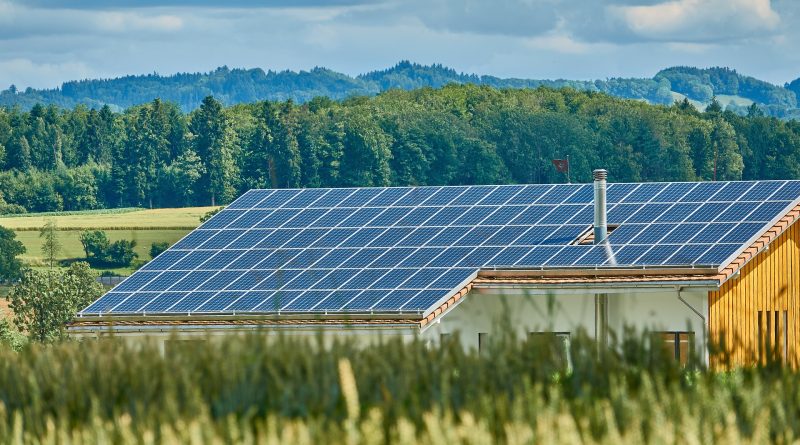Cost of 1 Watt Solar Energy: Analysis and Insights
Table of Contents
The Cost of Producing 1 Watt of Solar Energy
Solar energy has emerged as one of the most promising alternatives to traditional fossil fuel-based power sources. Its environmental benefits and potential for reducing greenhouse gas emissions have made it an attractive option. However, the cost of producing solar energy remains a significant consideration for both individuals and businesses looking to adopt this renewable energy source. In this blog, we will take a closer look at the expenses involved in producing 1 watt of solar energy and explore the factors that influence these costs.
Factors Affecting the Cost of Solar Energy Production
Several factors contribute to the overall cost of producing 1 watt of solar energy:
1. Solar Panel Cost: Solar panels are a crucial component of solar energy systems. The cost of solar panels has significantly decreased over the years due to technological advancements and increased production efficiency. The price of solar panels depends on factors such as the type of panel, the efficiency rating, and the material used in their construction. Generally, higher-quality, more efficient panels tend to be more expensive upfront, but they can generate more electricity over their lifetime, making them cost-effective in the long run.
2. Installation and Labor Costs: Installing solar panels requires skilled labor, which adds to the cost of solar energy production. The complexity of the installation process, the size of the system, and the location of the project affect the labor costs. Additionally, permits, inspections, and associated paperwork can also contribute to installation expenses.
3. Balance of System (BoS) Components: BoS components include inverters, mounting systems, wiring, batteries (if applicable), and other necessary equipment that connects and supports the solar panels. These components ensure the smooth functioning of the solar energy system and their costs vary depending on the quality and type of equipment chosen. While the prices of BoS components have also decreased, they still have a considerable impact on the overall cost of solar energy production.
4. Financing and Insurance: Acquiring financing for solar energy projects can involve additional costs in the form of interest payments and related fees. These costs depend on factors such as the creditworthiness of the borrower, interest rates, and the duration of the loan. Similarly, insurance costs are necessary to protect the solar energy system from potential damages caused by storms, natural disasters, or accidents.
5. Maintenance and Operations: Although solar energy systems generally require minimal maintenance, it is essential to account for ongoing upkeep and periodic inspections to ensure maximum efficiency and longevity. Regular cleaning, replacing faulty components, and monitoring system performance contribute to the overall costs of solar energy production.
Calculating Actual Cost per Watt of Solar Energy
To calculate the actual cost per watt of solar energy, we need to consider both the initial investment and the system’s overall expected lifespan. The formula for determining the cost per watt is as follows:
Cost per Watt = Total Cost of Solar Energy System / Total Energy Output over the System’s Lifetime
It is essential to consider the expected energy output over the solar energy system’s lifetime since the initial investment is spread over multiple years. Additionally, as technology advances and solar panels become more efficient, the average cost per watt continues to decrease.
The Global Trends in Solar Energy Costs
The cost of solar energy has experienced a remarkable decline over the past decade, making it increasingly competitive with conventional power sources. According to a report by the International Renewable Energy Agency (IRENA), the cost of solar photovoltaic (PV) modules decreased by around 90% between 2010 and 2020. This reduction in costs is primarily due to technological advancements, economies of scale, and increased investments in research and development.
Large-scale solar energy projects have witnessed particularly significant cost reductions. In some situations, solar energy is now the cheapest form of electricity generation, even without government subsidies. As more countries invest in solar power infrastructure and benefit from economies of scale, it is expected that the cost of producing 1 watt of solar energy will continue to decline.
Conclusion
Unlock the analysis and insights of the cost of 1 watt solar energy with SolarClue® as your guide in 2024. Understand the factors influencing expenses, estimate the average cost range, and stay informed about the latest trends. SolarClue® helps users optimize their installations for cost-effectiveness, leveraging technology advancements and government incentives. Address concerns about reliability and durability, ensuring value for your investment. Educate yourself on long-term savings and ROI, emphasizing the economic benefits of solar power. Let SolarClue® guide you in evaluating quotes for transparency and choosing reliable professionals. Explore financing options for an accessible transition to solar power. Join our community for shared experiences and collaborative learning on your path to efficient and affordable solar energy.
Frequently Asked Questions
SolarClue® guides users in understanding the analysis and insights of the cost of 1 watt solar energy in 2024 by detailing the factors influencing the cost and providing insights into the determination process.
SolarClue® provides information on the average cost range for generating 1 watt of solar energy, enabling users to estimate expenses and make informed decisions about solar power investments in 2024.
SolarClue® assists users in understanding the role of technology advancements and innovations in driving down the cost of generating 1 watt of solar energy, helping users stay updated on the latest trends in 2024.
SolarClue® guides users on optimizing their solar installations for cost-effectiveness, ensuring efficient utilization of resources and lowering the overall cost of 1 watt of solar energy in 2024.
SolarClue® provides insights into the role of government incentives, tax credits, and rebates in reducing the cost of generating 1 watt of solar energy, ensuring users are aware of available financial benefits in 2024.
SolarClue® addresses concerns about the reliability and durability of solar installations aimed at lowering the cost of 1 watt of solar energy, ensuring users receive value for their investment and enjoy a long lifespan in 2024.
SolarClue® educates users on potential long-term savings and ROI associated with lowering the cost of 1 watt of solar energy, emphasizing the economic benefits of investing in solar power in 2024.
SolarClue® guides users on evaluating quotes from solar installers for optimizing their solar installations to achieve cost-effective 1-watt generation, ensuring transparency in pricing and helping users choose reliable professionals in 2024.
SolarClue® assists users in exploring financing options and payment plans for solar installations aimed at lowering the cost of 1 watt of solar energy, making the transition to solar power more accessible and affordable in 2024.
SolarClue® fosters a community where users share their experiences with lowering the cost of 1 watt of solar energy, creating a platform for collaborative learning and support in 2024.




